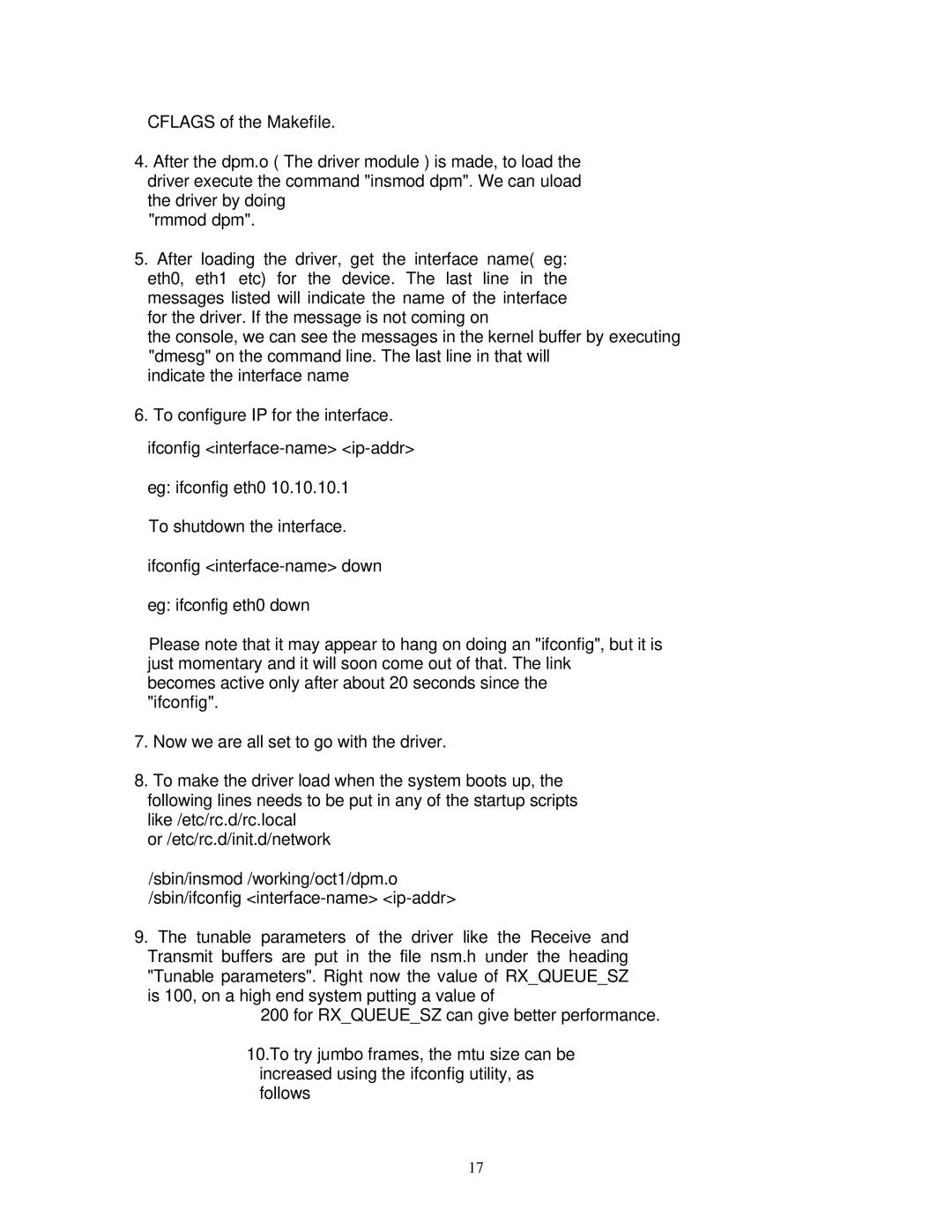CFLAGS of the Makefile.
4.After the dpm.o ( The driver module ) is made, to load the driver execute the command "insmod dpm". We can uload the driver by doing
"rmmod dpm".
5.After loading the driver, get the interface name( eg: eth0, eth1 etc) for the device. The last line in the messages listed will indicate the name of the interface for the driver. If the message is not coming on
the console, we can see the messages in the kernel buffer by executing "dmesg" on the command line. The last line in that will
indicate the interface name
6.To configure IP for the interface.
ifconfig
eg: ifconfig eth0 10.10.10.1
To shutdown the interface.
ifconfig
eg: ifconfig eth0 down
Please note that it may appear to hang on doing an "ifconfig", but it is just momentary and it will soon come out of that. The link becomes active only after about 20 seconds since the
"ifconfig".
7.Now we are all set to go with the driver.
8.To make the driver load when the system boots up, the following lines needs to be put in any of the startup scripts like /etc/rc.d/rc.local
or /etc/rc.d/init.d/network
/sbin/insmod /working/oct1/dpm.o /sbin/ifconfig
9.The tunable parameters of the driver like the Receive and Transmit buffers are put in the file nsm.h under the heading "Tunable parameters". Right now the value of RX_QUEUE_SZ is 100, on a high end system putting a value of
200 for RX_QUEUE_SZ can give better performance.
10.To try jumbo frames, the mtu size can be increased using the ifconfig utility, as follows
17
